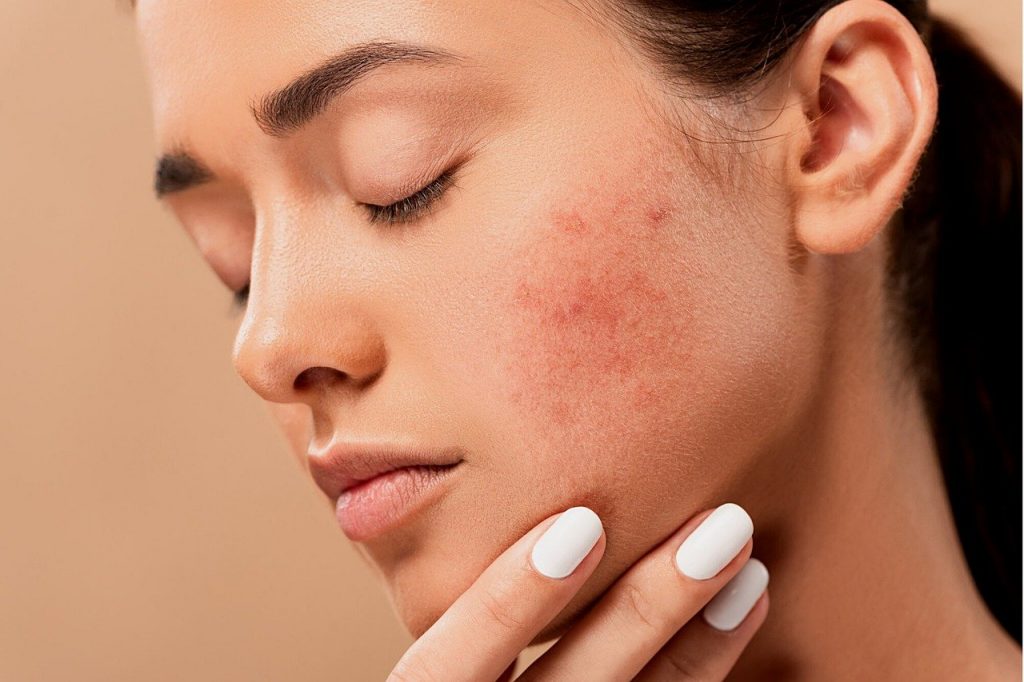We tend to stress about new pimples, particularly the ones that arrive at inopportune times, but it’s the long-term scarring that follows that wreaks greater havoc on our lives.
That doesn’t mean we’re helpless against them, though. There are proven ways to fade them quickly – or prevent the scarring from even forming in the first place. I’ll discuss those in my next post. For now, let’s take a closer look at what’s causing that scarring and what type of scar you might have. That’s important because it’s going to inform the treatment.

What causes acne scarring?
Inflammatory acne lesions, such as papules (think pink raised bumps), pustules (think pink bumps with white pus), or cysts, are responsible for acne scars.
Several factors contribute to your risk for developing scars. For one, if you have family members who have acne scars, you’re at a higher risk of developing them too.
Your skin type affects the kind of scarring you could develop. Those with lighter complexions are prone to acne erythema (persistent redness) after inflammatory acne, while those with darker complexions can experience post-inflammatory hyperpigmentation (PIH).
Melanocytes (the cells that produce melanin) are very sensitive to inflammation, which explains why someone with fair skin, or little melanin, may experience some short-lived redness while someone with darker skin, and more melanin, will have PIH that can linger for months.
Also, you’ve probably heard this countless times already, but resist the urge to pop your pimple. It causes excess trauma that will worsen inflammation, resulting in scars. It’s also good idea to ditch the harsh scrubs and skincare products that can further irritate skin.
Which kind of scar do you have?
Four kinds of scars can develop from acne: ice pick, rolling, boxcar, and hypertrophic. As I said, it’s important to identify yours because it’ll make it that much easier to land on the most effective treatment.
Ice pick scars: Small, narrow, pinpoint acne scars that deeply penetrate the skin. They form when infected cystic acne moves to the surface and destroys the skin tissue.
Rolling scars: wide and shallow scars that have a wave-like appearance. They form when tissue develops between the outer-most and inner-most layers of the skin and bands together.
Boxcar scars: scars with angular, well-defined edges. Here, an inflammatory breakout destroys collagen, resulting in a loss of tissue. The skin, in turn, is left with depressed areas.
Hypertrophic scars: raised scars. They occur when the skin doesn’t recognize that the wound has healed and overproduces collagen.
If you’re not sure which scarring you have, see your dermatologist.


 Why It’s Important to Know that Moisturizing and Hydrating are Two Different Things
Why It’s Important to Know that Moisturizing and Hydrating are Two Different Things